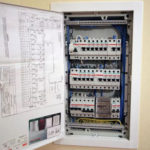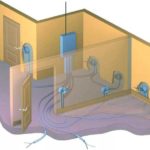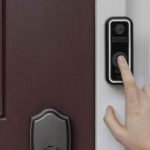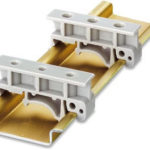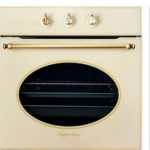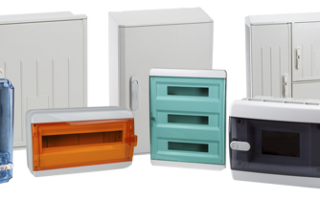To connect electricity in each apartment or private house you need an electrical panel. The value and its content depend on the number of connected electrical appliances.
Content
- 1 What is an electrical panel and why is it needed
- 2 Drawing up a diagram of an electrical panel
- 3 Principles for the distribution of electricity consumers by groups
- 4 How to choose a good electrical panel?
- 5 Assembly and installation of the shield on the wall
- 6 How to assemble an electrical panel diagram
- 7 Adjustment and operation of the shield
What is an electrical panel and why is it needed
Electrical switchboard - these are circuit breakers, RCDs, voltage relays and other devices assembled in one place, designed to protect and turn off electrical appliances connected after it.

Sockets, electric meters, ammeters and other devices can be installed in switchboards.
Installation of electrical panels in an apartment or a private house is carried out near the entrance, in a place that excludes water from entering it.
The convenience of controlling electrical appliances depends on the filling of the shield. For example, you can turn off and turn on all electric heating or outdoor lighting at the same time, from one place.
Drawing up a diagram of an electrical panel
Before assembling the electrical panel, it is necessary to draw up its diagram. It is drawn up according to the wiring diagram in the apartment. On it, all the equipment located in the switchboard in the apartment is located after the electric meter.
According to the wiring diagram, it is determined how many circuit breakers are needed and their rating, the parameters of the RCD and other devices.
Electricity consumers can be divided into groups, each of which has its own machine. This is indicated on the electrical panel diagram.
Important! Drawn up according to the rules of the PUE (rules for electrical installations), the electrical panel diagram is important for the correct installation of switchboards.
 Principles for the distribution of electricity consumers by groups
Principles for the distribution of electricity consumers by groups
For ease of maintenance, consumers are divided into groups, each of which is turned off by a separate machine installed in the electrical switchboard.
In shields by groups, electrical networks are divided according to different criteria:
- By current strength. A separate powerful machine turns off electric stoves and electric heating, and low-power lighting. This is done because the rated current of the circuit breaker to which the stove is connected is higher than the permissible current for the cable laid in the network for lighting. Therefore, this machine will not be able to protect this wire.
- Directions.Wiring going to different parts of the apartment or to the house and garage are turned off by separate machines for ease of operation.
- By functions. Sockets and lighting, interior and exterior lighting, working and emergency lighting.
Is RCD required?
RCD or differential circuit breaker, is installed to protect people from electric shock.
These devices work on the principle of comparing currents in the neutral and phase wires. In a working network, these values \u200b\u200bare equal. In the event of a violation of the insulation between parts of electrical equipment that are under voltage and a grounded case or touching such parts of a person, this equality is violated, which causes the protection to trip.
Such devices differ in response current and are connected one to the whole house or several, one in each part of the electrical circuit.
Important! Installing an RCD on a network can save the health or life of people living in the house.
The difference between an RCD and a differential circuit breaker is that a differential circuit breaker combines the functions of an RCD and a circuit breaker. It is more expensive than both of these devices together, but takes up less space in the shield.
Installing a voltage relay
All household appliances and electronics are rated for 220V. But in case of accidents in the electrical network - burnout of the neutral wire, short circuit between the neutral and phase wires, and in other cases, it can increase to 380V, which leads to equipment failure.
A voltage drop below acceptable limits is also dangerous - if the TV or computer simply does not turn on, the compressor of the refrigerator and air conditioner will burn out.
To prevent such situations, a voltage relay RN is installed.
Unlike an RCD, only one such device is needed, with a rated current not less than that of an introductory machine.
How to calculate the number of places in the electrical panel
In modern shields, the equipment is installed on a DIN rail. This is a figured steel, less often plastic, bar on which machine guns and other devices are installed. At the base of these devices there are special grooves and latches with which they are attached to the rail.
The width of all circuit breakers, RCDs and other protection devices mounted on a DIN rail is standard and is measured in modules. The size of one module is equal to the width of a single-pole machine.
To determine the number of seats in the shield, you must:
- draw up a diagram of the electrical panel;
- according to this scheme, write a list of all installed equipment with an indication of the width in modules;
- calculate the total width of all devices.
Important! The width of electrical panels upon purchase is also measured in modules. This is the hole size for installing electrical appliances. In some designs, it can be increased by breaking out the plates in the outer cover.
How to choose a good electrical panel?
The quality and reliability of the electrical panel in the house depends mainly on the quality of the equipment, but what the switchboard will be like also matters.
There are different types of residential electrical panels. The choice depends on the number of modules and specific conditions. Preference should be given to plastic shields with the following qualities:
- a metal rather than a plastic DIN rail is installed inside - such a bar provides a more reliable fastening of protective equipment;
- hinged cover - additionally protects the machines from accidental activation and mechanical damage;
- there is a terminal block for grounding wires - in its absence and the presence of grounding, the terminal block will have to be installed additionally.
Reference! In cables, the insulation of the grounding conductor is yellow or yellow-green.
With a significant amount of equipment, preference should be given to boxes, inside of which there is a frame with DIN rails installed on it. If 2-3 machines are easy to mount in the installed switchgear, then it is more difficult to connect 5-10 or more. In this case, the frame is removed, installation and connection are made on the table, and it is installed back.
How to choose modular equipment in an electrical panel
The equipment installed in the electrical panel is selected primarily by the total current of the devices connected after specific protection devices.
The current of the circuit breakers must ensure the operation of all electrical appliances at the same time, but not exceed the permissible current for the wiring.
For example, the total power of electrical appliances is 5 kW. The total current of these devices will be, according to the formula, the rated current of the machine should not exceed this value, otherwise there is a danger of overheating of the cables and their failure.
The permissible current of the RCD and voltage relay for reliability is selected more than the current of the circuit breaker, which is in the same circuit with it.
In addition, sockets, ammeters, starters for turning on electric heating and other equipment are installed in the assembled electrical panel.
Assembly and installation of the shield on the wall
Mounting the switchboard on the wall is done in two ways - external, or invoice and internal, or mortise.After installing the box in place, the electrical panel is assembled.
External mount
This is an easier way, but less aesthetic. In addition, there is a risk of mechanical damage to the shield during operation. Such an installation is carried out as follows:
- an empty box without an outer cover is applied to the wall and through the mounting holes mark the installation sites for dowels;
- holes are drilled in the marked places in the wall and the plastic parts of the dowels are clogged;
- the box is applied to the wall and dowels are hammered into the mounting holes.
If the shield is large and metal, then instead of plastic dowels, anchor bolts are used.
Indoor installation
The internal installation is more complicated, but the result is better:
- the box is applied to the wall, and its contours and cable entry points are marked;
- with an angle grinder or a puncher, recesses are cut out for installing an electrical panel and suitable cables;
- with dowels or anchor bolts, the cabinet is fixed at the installation site;
After installation, assembly and connection, the gaps around the switchboard are filled with putty, cement or mounting foam. You can assemble such an electrical panel with your own hands or purchase a ready-made one.
How to assemble an electrical panel diagram
The assembly of an apartment plastic switchboard from several machines is carried out at the installation site, but when assembling an electrical switchboard circuit for a private house, consisting of a large amount of equipment, it is more convenient to do it on the table.
To connect the upper terminals of the machines in the switchboard for electrical wiring, it is convenient to use special combs. They are available in one, two or three poles. It depends on the number of phases of the RP electrical circuit.
The procedure and rules for installing all types of electrical panels and assembling the electrical circuit with your own hands do not change from this:
- when connecting automatic machines and protection devices of the electrical panel in the house, suitable wires are connected from above;
- more than two wires, conductors of different sections or a rigid and flexible wire are not connected to one terminal;
- jumper cross section is selected equal to or greater than the cable cross section.
- the wires differ in the color of the insulation - zero blue, and phase brown.
With minimal experience in electrical installation, you can assemble an electrical panel with your own hands without any problems:
- According to the wiring diagram, the equipment is placed. There are two options for location - in terms of significance (first, all introductory, then RCD, etc.) and in directions.
- Places for installing comb tires are marked, and the desired length is cut off. The ends of the combs are closed with plugs.
- From the lower terminals of the introductory circuit breaker, the phase and zero are “distributed” to the equipment connected after it. To do this, cut off pieces of wires of the desired color and section of such a length that they enter the terminals perpendicularly, without tension.
- The distribution of phase and zero can be done with jumpers from pieces of PV3 wire of the corresponding color.
- The assembled electrical panel is connected. When mounting on site, a suitable cable is connected, and when assembling the switchboard on a table, using a piece of cable and a plug. The introductory machine is turned on, and then all protection devices. The serviceability of the RCD is checked by pressing the "Test" button.
- The tester checks the presence of voltage at the terminals to which the outgoing cables are connected.
Important! According to the new PUE standards, it is forbidden to clamp stranded wires into the terminals. For this, special NShVI tips are used.
Adjustment and operation of the shield
After assembling the electrical panel and installing the electrical panel in the apartment, all switches are set to the “off” position and commissioning begins:
- Before checking the shield, it is necessary to connect electrical devices - sockets, switches, lamps and powerful consumers.
- Voltage is applied to the electrical panel and the tester checks the correct connection of the phase and zero.
- RCDs and difavtomats are turned on, then by pressing the "Test" button their performance is checked.
- The tester checks the voltage at the output of the circuit breakers.
- Powerful electrical appliances are turned on. There must be no sparking and heating of the apparatus.
- Voltage is checked at outlets.
- lighting check is performed.
- in this mode, the electrical panel should work for several hours.
- If small children live in the house, then the switchboard is locked.
With successful tests, after installing the electrical panel in the apartment, it is closed with a lid with a glued circuit of the electrical panel. If during the commissioning process the electrical panel circuit changes, then this is noted on the drawing.
All empty places in the cover after the assembly of the electrical panel is completed, are closed with plugs.
The junction box is not a "set it and forget it" design. After installation of switchboards, they require periodic control:
- After a month of operation, the switchboard opens and the terminals are pressed in it.
- Adult residents of the apartment need to be told about the rules for operating the electrical switchboard and the procedure for when the protection is triggered.
- Once a month, the check of the serviceability of the RCD and difavtomatov installed in switchboards is repeated.
Even a novice electrician can assemble the electrical panel on their own. Therefore, the installation of the electrical panel is available to any person who is in a "friendly" relationship with a screwdriver and pliers.
Similar articles:
